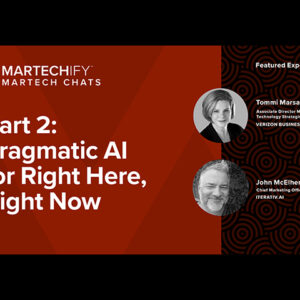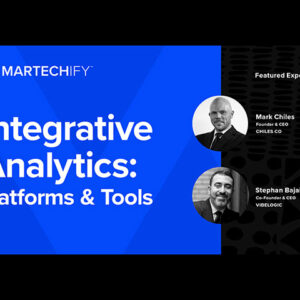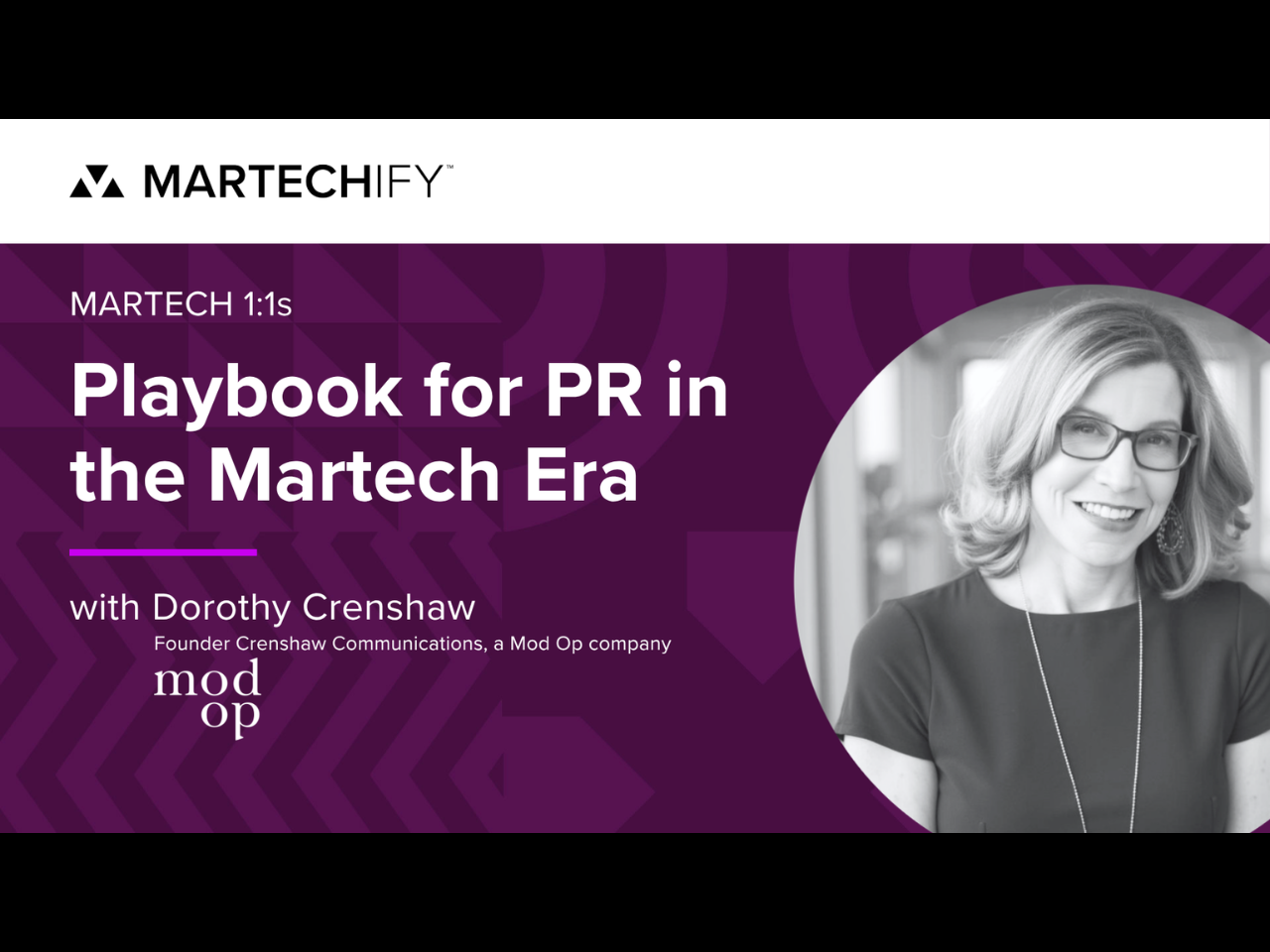HP Ushers in the Next Generation of ABM and Personalization: Leveraging AI to Hyper-Customize Marketing for 100k Products
- Fabio Ranieri, Head of Digital GTM Innovation at HP
- AI and Automation, Content Strategy and Marketing, Customer Experience (CX), Digital Transformation, Strategy and Trends
In an era where customers demand hyper-relevant experiences, HP is tackling personalization at a scale few brands can imagine: across over 100,000 SKUs, in countless global markets, and tailored to a spectrum of consumer and business needs. At the forefront of this transformation is Fabio Ranieri, the Head of Digital GTM Innovation at HP.
We sat down with Fabio to learn how his team leverages AI to break free from traditional marketing personalization models, and how they reengineered content strategy to achieve hyper customization for maximum relevancy.
We sat down with Fabio to learn how his team leverages AI to break free from traditional marketing personalization models, and how they reengineered content strategy to achieve hyper customization for maximum relevancy.
Check out the full interview with Fabio Ranieri, where he shares how HP is rewriting the rules of personalization by combining AI-driven content generation with a bold new approach to ABM.
From engineering to emotion: Fabio’s path into Martech
Fabio’s journey began in engineering, but it didn’t take long before he realized that technology only works when it resonates with people. “We had the tech, but it wasn’t about the tech. It was about how people reacted to what we put out,” he explains. That realization pushed him from coding into the dynamic world of marketing and e-commerce.
Today, based in Austin, Texas, he is tackling one of the most complex challenges in hyper-customization and AI-driven content synthesis: making 100,000 products feel relevant to millions of diverse buyers—whether it’s a small business in Seoul, a family in Texas, or an enterprise in Brazil.
Today, based in Austin, Texas, he is tackling one of the most complex challenges in hyper-customization and AI-driven content synthesis: making 100,000 products feel relevant to millions of diverse buyers—whether it’s a small business in Seoul, a family in Texas, or an enterprise in Brazil.
Traditional ABM: The content problem
Traditional account-based marketing (ABM) starts with insights: audience segments, buyer intent data, and demographic attributes—then tries to layer in personalization. But Fabio quickly discovered a painful bottleneck: creating affordable, scalable content that could match the precision of their insights.
“You know who you want to talk to, when, and how,” Fabio says, “but you get stuck because you can’t create all the content needed for those personalized experiences. It’s just too expensive.”
“You know who you want to talk to, when, and how,” Fabio says, “but you get stuck because you can’t create all the content needed for those personalized experiences. It’s just too expensive.”
Flipping the script: Starting with content generation
Instead of building from the data outward, HP flipped the script. The team began by investing in AI-powered content generation capabilities, ensuring they could create and adapt content before defining personalization use cases.
This approach, which Fabio calls “working from the middle out,” involved two key phases:
1. Content Expansion: Using AI to transform content across different formats and channels: ads, product pages, videos, and more. This allowed HP to reuse and adapt global content for local markets.
2. Accuracy First: As Fabio noted, “the biggest challenge with Gen AI… is that I need to guarantee that the audience sees 100% product accuracy.” Fabio recognizes that if a customer buys an HP product and the content is even slightly off, it breaks trust. To solve this, the team developed narrow, highly specific use cases that minimize hallucinations and ensure factual consistency.
1. Content Expansion: Using AI to transform content across different formats and channels: ads, product pages, videos, and more. This allowed HP to reuse and adapt global content for local markets.
2. Accuracy First: As Fabio noted, “the biggest challenge with Gen AI… is that I need to guarantee that the audience sees 100% product accuracy.” Fabio recognizes that if a customer buys an HP product and the content is even slightly off, it breaks trust. To solve this, the team developed narrow, highly specific use cases that minimize hallucinations and ensure factual consistency.
Global scale, local relevance
With a content generation engine in place, HP is finally able to address one of its core challenges—localization and cultural relevance at scale. Fabio points out examples like avoiding tattoos in visuals in certain regions or adapting tone based on cultural nuances.
The result? Instead of personalizing for just a few segments, HP will now tailor content to 20+ personas across multiple countries without ballooning budgets.
And more than just creating relevant content, AI helps HP answer real customer questions. Whether a small business is seeking a printer that handles legal-sized paper, or a parent is buying a high-volume home printer, the goal is to provide the right content at the right time and in the right format.
The result? Instead of personalizing for just a few segments, HP will now tailor content to 20+ personas across multiple countries without ballooning budgets.
And more than just creating relevant content, AI helps HP answer real customer questions. Whether a small business is seeking a printer that handles legal-sized paper, or a parent is buying a high-volume home printer, the goal is to provide the right content at the right time and in the right format.
What the customer experiences
As a buyer, you won’t see the AI machinery behind the scenes, but you’ll feel the difference:
— More helpful ads tailored to your intent
— Product pages that answer your specific questions, based on your use case
— Fewer frustrating moments where you abandon a search due to unanswered questions
The goal is faster, more satisfying journeys. “We don’t want you to get bored comparing three printers. We want to answer the one key question that helps you decide.”
— More helpful ads tailored to your intent
— Product pages that answer your specific questions, based on your use case
— Fewer frustrating moments where you abandon a search due to unanswered questions
The goal is faster, more satisfying journeys. “We don’t want you to get bored comparing three printers. We want to answer the one key question that helps you decide.”
Organizational impact: More QA, less pixel-pushing
Implementing AI at this scale isn’t just a tech project—it’s an organizational shift. Fabio highlights several key changes:
— Longer setup time: Building robust tools and creative setups takes months, but once done, HP can generate thousands of assets instantly. Fabio shared one of his recent examples, “One of the setups we had took nine months, but once it was done, it generated 11,000 assets the next day.”
— Human-in-the-loop QA: HP never releases AI content without human review. QA teams now focus on reviewing concepts and templates, not tiny visual details.
— New roles and mindsets: Fabio’s team includes both AI specialists and nimble, experimental thinkers who bring startup-like agility to a corporate environment.
— Longer setup time: Building robust tools and creative setups takes months, but once done, HP can generate thousands of assets instantly. Fabio shared one of his recent examples, “One of the setups we had took nine months, but once it was done, it generated 11,000 assets the next day.”
— Human-in-the-loop QA: HP never releases AI content without human review. QA teams now focus on reviewing concepts and templates, not tiny visual details.
— New roles and mindsets: Fabio’s team includes both AI specialists and nimble, experimental thinkers who bring startup-like agility to a corporate environment.
Looking ahead: AI as a multiplier, not a shortcut
HP’s experience shows that AI doesn’t magically replace human creativity. It amplifies it. The real power lies in AI’s ability to scale quality personalization, not just automate it.
“Once you get it right,” Fabio concludes, “you’re going to be super proud of it.” However, getting there takes patience, iteration, and commitment to accuracy and relevance.
For Martech professionals exploring how to harness AI for global personalization, HP’s strategy offers a roadmap: build smart, test hard, and always keep the customer’s question at the center.
“Once you get it right,” Fabio concludes, “you’re going to be super proud of it.” However, getting there takes patience, iteration, and commitment to accuracy and relevance.
For Martech professionals exploring how to harness AI for global personalization, HP’s strategy offers a roadmap: build smart, test hard, and always keep the customer’s question at the center.













